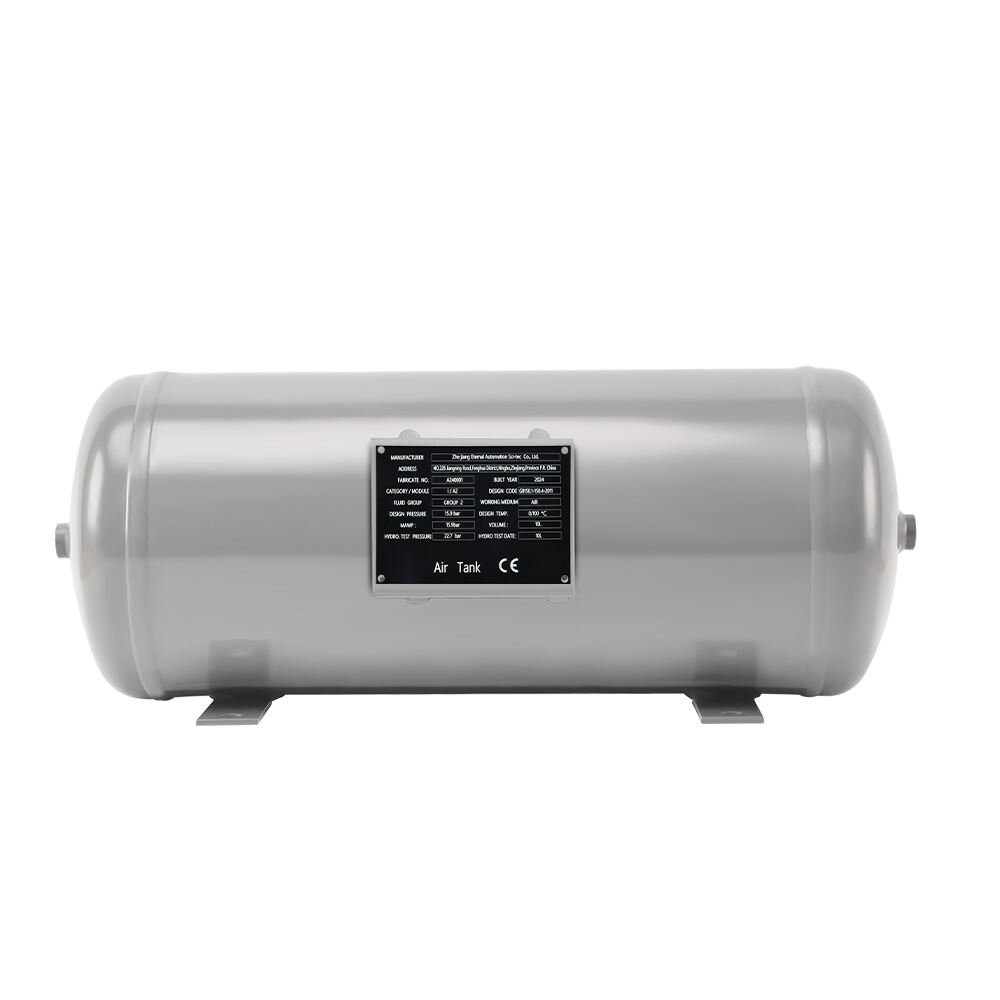Italialaisen ilmavaraston teollisuuden kehityshistoria
Paineilmalaitteet (mukaan lukien ilmavarastot) ovat keskeinen osa Italian koneviennin komponentteja. Italian ilmavarastoteollisuuden kehitys on pikku mittapuu koko paineilujärjestelmäteollisuuden kehitykselle. Kehitys on tiiviissä yhteydessä valmistavaan teollisuuteen, erityisesti kone-, auto- ja kemiateollisuuteen.
Italia aloitti teollistumisprosessin 1800-luvun lopulla, erityisesti pohjoisilla alueilla (kuten Lombardiassa ja Piemontessa), joissa tekstiili-, kone- ja varhaiset automaaliiteollisuudet (Fiat perustettiin vuonna 1899) alkoivat kukoistaa. Tuohon aikaan ilmasäiliöt toimivat ensisijaisesti apulaitteina pistokompressoreille, niillä oli yksinkertainen rakenne, ne valmistettiin nittauksella tai varhaisilla hitsausmenetelmillä, ja ne valmistettiin pääasiassa pehmeästä teräksestä. Näiden ilmasäiliöiden tärkein tehtävä oli tasoittaa pistokompressorin tuottamaa pulssivoimaista ilmavirtaa ja tarjota tilapäinen ilmanvarastointi. Ilmasäiliöiden tuotantomittakaava oli pieni, ja ne valmistettiin pääasiassa pienissä ilmasäiliötehtaissa, jotka tyytymättömän kysynnän konepajoihin, kaivoksiin ja rakennushankkeisiin. Niiden teknologia ja suunnittelu olivat saksalaisten ja brittiläisten aikaisemmin teollistuneiden maiden vaikutuksen alaisia.
Toisen maailmansodan jälkeen Italia koki "taloudellisen ihmeen", jolloin teollisuuden menestys oli ennennäkemätöntä erityisesti autoteollisuudessa, kemianalalla ja kodinkoneiden aloilla. Tämä loi valtavan kysynnän vakaille ja tehokkaalle paineilujärjestelmille. Ruuvipuristinteknologian yleistyessä ilmasäiliöiden suorituskyvylle asetettiin tiukempia vaatimuksia. Ilmasäiliövalmistajat aloitettiin tuottaa enemmän standardoituja säiliöitä. Hitsausteknologia tuli yleiseksi, ja hitsauksen laadulle ja turvallisuudelle annettiin entistä suurempi painoarvo. Ilmasäiliöiden päätehtävä ei ollut enää pelkästään paineen tasaaminen; energian varastoinnin ja kosteuden erottamisen toiminnot ymmärrettiin paremmin ja huomioitiin suunnittelussa. Useita ammattimaisia ilmasäiliövalmistajia, jotka erikoistuivat paineilujärjestelmien laitteisiin, nousi esiin. Nämä yritykset aloittivat brändien rakentamisen ja laajensivat myyntiään Italian koneiden vientiä seuraten Euroopan ja muiden markkinoiden alueille.
Öljykriisin jälkeen energiatehokkuuteen ja kustannuksiin kiinnitettiin suurta huomiota. Samalla Euroopan integraatio nopeutui, ja yhtenäinen markkina sekä sääntelystandardit alkoivat kehittyä. Euroopan painelaitedirektiivin (PED) edeltäjä ja siihen liittyvät kansalliset määräykset (kuten Italian ISPESL-standardi) tiosivat yhä tiukempia vaatimuksia, mikä edisti ilmasäiliöiden suunnittelun, materiaalien, valmistuksen ja tarkastusten standardointia. Italian ilmasäiliövalmistajat sopeutuivat nopeasti näihin korkeisiin standardeihin. Korkealaatuinen hiiliteräs käytettiin yleisesti ilmasäiliön materiaalina, ja sisäpinnan korroosiosuojaukset (kuten sorapuhallus ja maalaus) tulivat tavalliseksi käytännöksi. Ilmasäiliöiden suunnittelu keskittyi virtausvastuksen vähentämiseen, tyhjennyksen helpottamiseen ja huoltokelpoisuuden varmistamiseen. Eri teollisuudenalojen (kuten elintarvikkeiden, lääketeollisuuden ja elektroniikan) erityistarpeiden täyttämiseksi ilmasäiliöt alkoivat käyttää ruostumaton teräs . Teollisuuden keskittymisen kasvaessa johtavat yritykset vakiinnuttivat asemansa teknologisella innovaatiolla ja laadunhallinnalla. Italian ilmasäiliöillä on vahva maine kansainvälisellä markkinalla luotettavan laadun ja kilpailukykyisten hintojen ansiosta.
Alkaen 2000-luvun alusta globalisaatio on johtanut kovaan kilpailuun kiinalaisten ilmavarastovalmistajien ja intialaisten tehtaiden taholta. Samanaikaisesti energiatehokkuutta ja ympäristönsuojelua koskevat vaatimukset ovat nousseet ennennäkemättömän korkealle. Koska ilmavarasto on tärkeä osa paineilujärjestelmän 'energiansäästöketjua', ilmavarastojen mitoitus ja optimaalinen konfigurointi ovat tulleet ratkaisevan tärkeiksi. Ilmavarastovalmistajat tarjoavat paitsi ilmavarastosäiliöitä, myös järjestelmäratkaisuja, korostaen ilmavarastojen roolia järjestelmän paineen alentamisessa ja tehokkaassa energian varastoinnissa. Edessä on halvan kilpailun kanssa, jonka edessä italialaiset ilmasäiliö valmistajat ovat yleisesti siirtyneet kohti "korkean tason mukauttamista" ja "järjestelmäratkaisujen toimittajia". Hyödyntäen syvää teknistä osaamistaan, kehittynyttä käsityötaitoaan ja tiukkaa noudattamista Euroopan PED-direktiiviä, he palvelevat asiakkaita, joilla on erittäin korkeat vaatimukset turvallisuudelle, luotettavuudelle ja energiatehokkuudelle.




